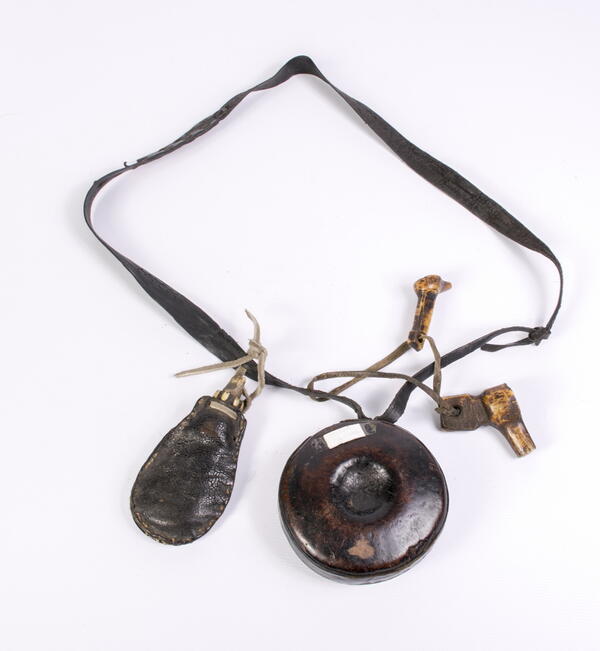In the traditional culture of the peoples of the North, the belt is an essential element of men’s, women’s, and children’s clothing. It has functional, social, aesthetic, and spiritual significance. The belt is used to secure clothing both with and without a front opening and to keep the wearer warm even in strong winds and cold weather. A long malitsa can be shortened by being folded over a belt.
The loose cut of the malitsa allows the wearer to keep a tobacco pouch and a pipe underneath and to take the arms out of the sleeves to complete some small tasks, which is especially important in severe frost.
The belt also indicates the wearer’s social status, origin, and wealth. All of this is manifested in the quality of the material and the richness of the décor. A man’s belt is revered as a sacred object and is often handed down from one generation to another as a family heirloom. The belt was the prototype of a waist bag. When clothes did not have pockets, a belt was used to carry all the necessary belongings.
An essential part of a man’s belt is a bear’s fang. This amulet is fastened on the back: it is believed to prevent back pain and protect the wearer from evil forces. The belt can be used to carry various belongings, such as a knife, a whetstone, and a pouch with a flint. In the past, when there were not enough shell casings, small containers made of wood, birch bark, and leather were suspended from the belt to store gunpowder and shot. The belt should only be equipped with those possessions that are essential for the life and work of a fisherman or a hunter.
The peoples of the North have a strict set of rules and restrictions regarding the belt. It is handled with utmost care and is kept in the front corner of the tent — on the men’s half of the chum. A belt should not be thrown or stepped over. By putting on a belt, a man showed that he was ready for work and emphasized his strength and social status.
A tight belt also supports the back. The decorative
patterns on the belt have a sacred meaning, they summon the spirits of nature and
drive away evil forces. The décor on every element of northern clothing has three
functions: communicative, magical, and aesthetic.




